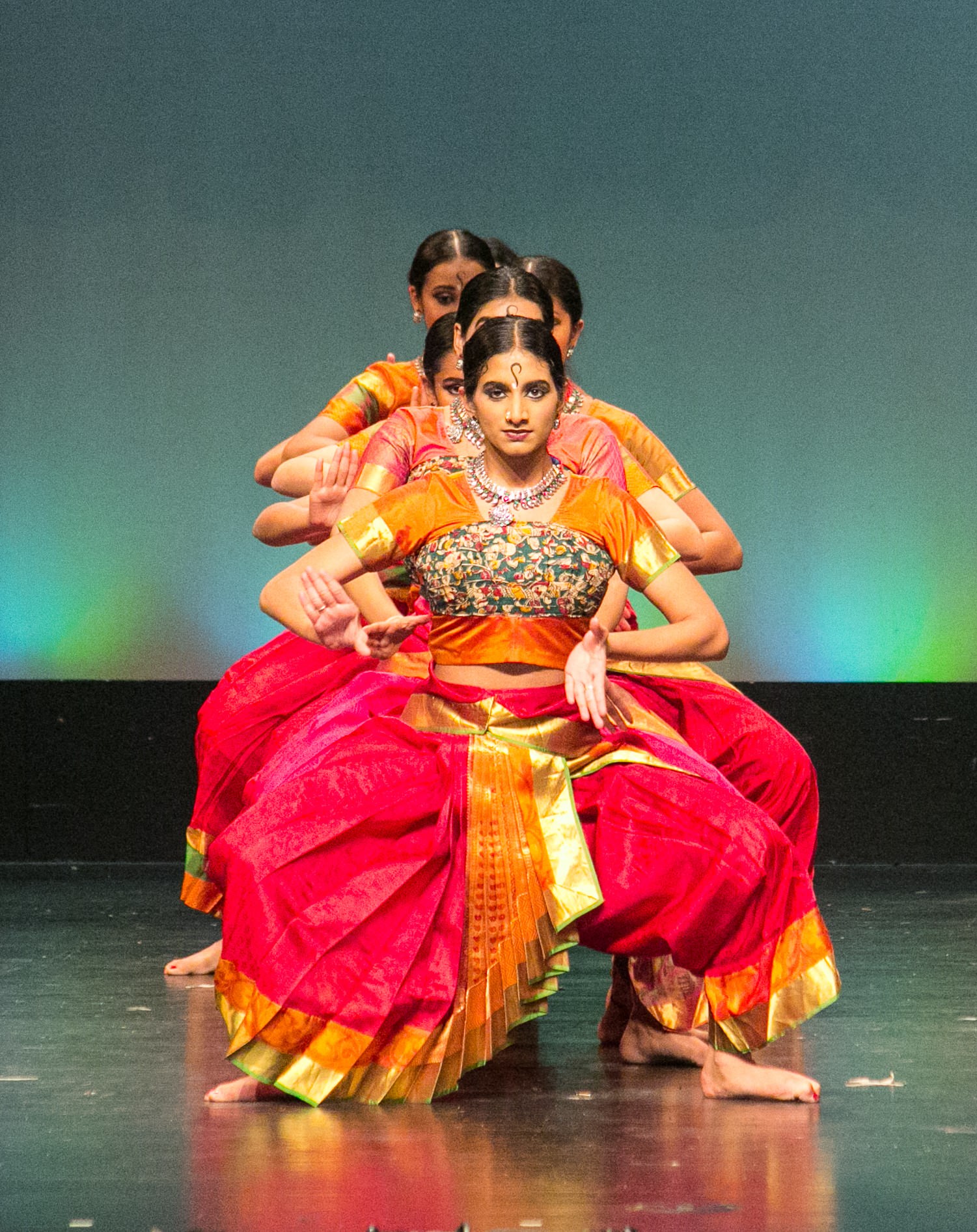The Arangetram Fallacy
Why First Ascension to Stage Should Not be the Last
by Shalini Thoniyil
ver the past 16 years of my dance journey, I have found the idea of arangetram to be one of the most misunderstood aspects of the Bharatanatyam tradition. Far too often, people consider an arangetram to be the end-all of one’s dance career. As a community, we treat it as a gold medal of sorts — something to write on applications, an occasion to take hundreds of commemorative pictures and boast about to relatives. But once we have gotten into our desired colleges, once the pictures have been hung upon the wall and the parents have exhausted all bragging rights with friends and family, that is the end of it. The arangetram becomes the final chapter in a standalone, sequel-less novel. If there were an epilogue, it would be one of those infamously disappointing ones where the protagonist acts completely out of character and does not follow up on any of the plot points that were relevant to his or her original story. What people fail to understand is that even the word arangetram signifies a dancer’s first ascension to the stage as a performer. In the very nature of the term, the arangetram is just the beginning.
By abandoning this art form after an arangetram, a dancer is essentially just stopping his or her journey before it has even begun
My arangetram partner Megha Nair and I can wholeheartedly agree that our decision to stay in touch with the studio post-arangetram by becoming teachers has benefited us immensely, far more than we could have anticipated back in 2016. Coming to the studio every weekend since our arangetram has helped us keep in touch with the art form, leaving little room to lose the technique we had worked so hard to attain. It has now been almost three years, and the more I revisit my arangetram video, the more I feel so far removed, as if I were watching a different person on that stage. This is not to say that I have any regrets about my arangetram performance; I am still extremely proud of what I accomplished, and I know that in that moment, I gave 100% of my mental and physical energy and ultimately succeeded to the best of my ability. However, seeing how much I have grown since then – not only as a dancer but as a human being – only further proves why quitting dance after the arangetram would have been such a personal disservice. By abandoning this art form after an arangetram, a dancer is essentially just stopping his or her journey before it has even begun.
(Shalini Thoniyil is a graduate of Tala Shruti, currently attending Rutgers University as well as teaching at Tala Shruti.)

